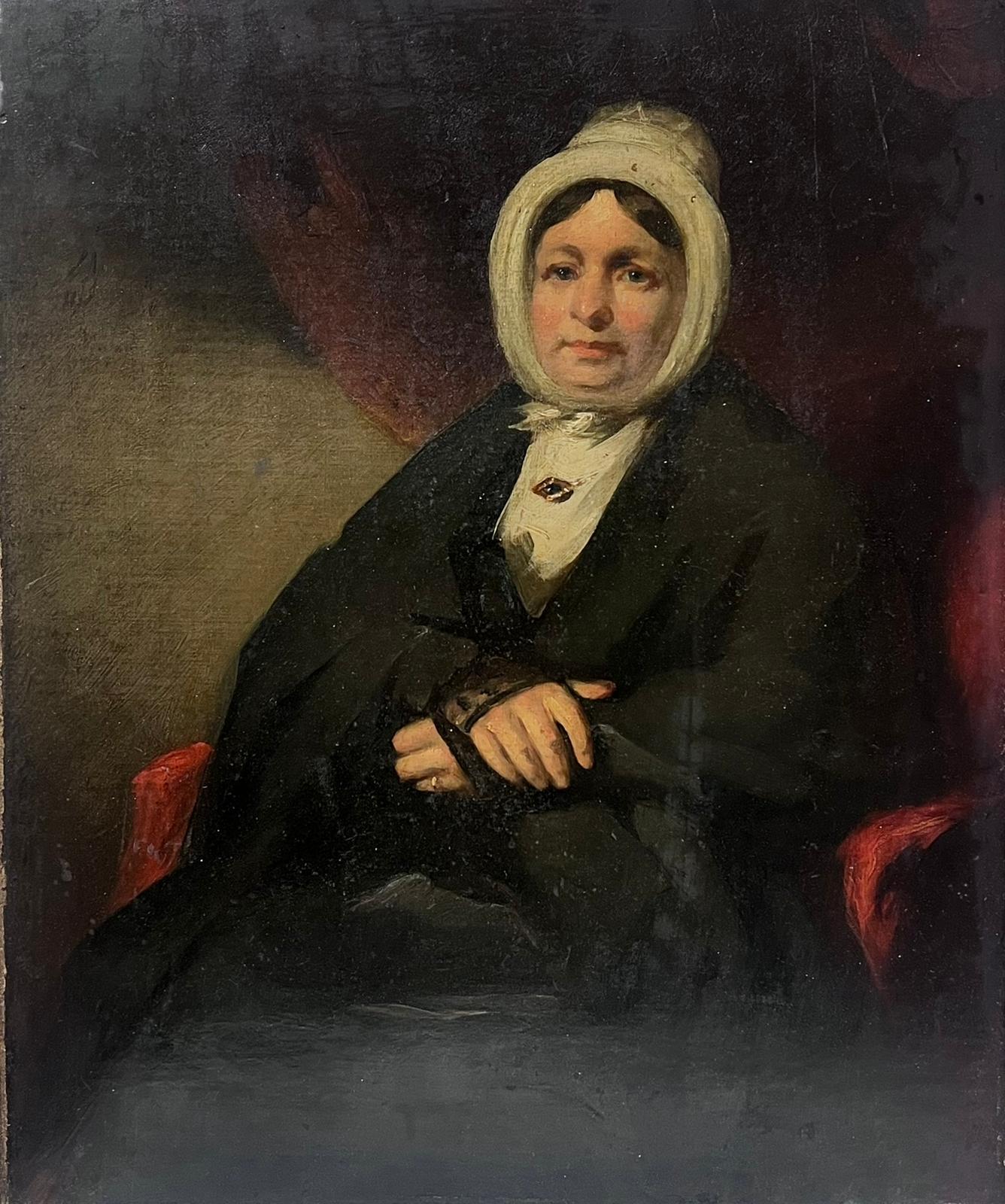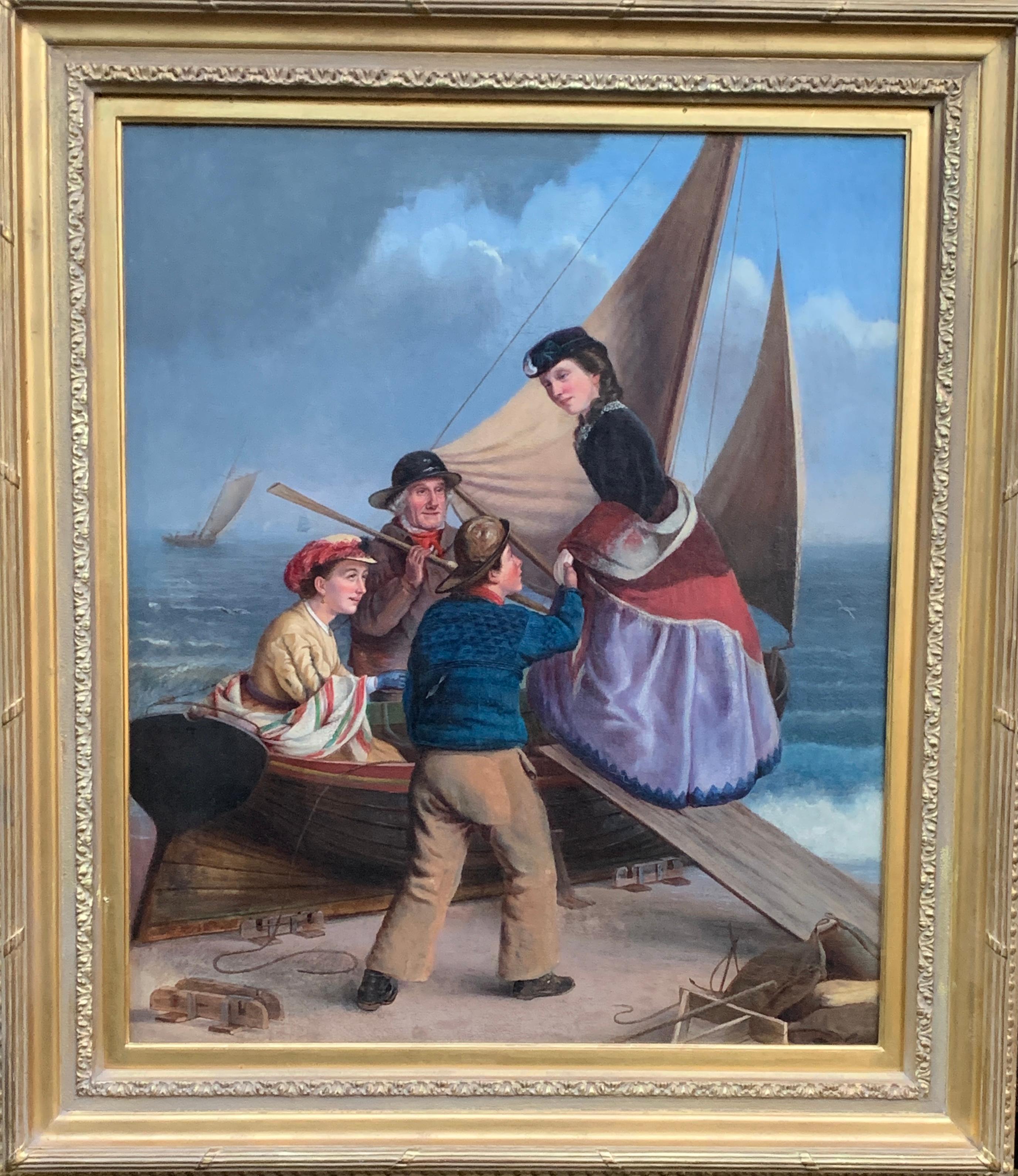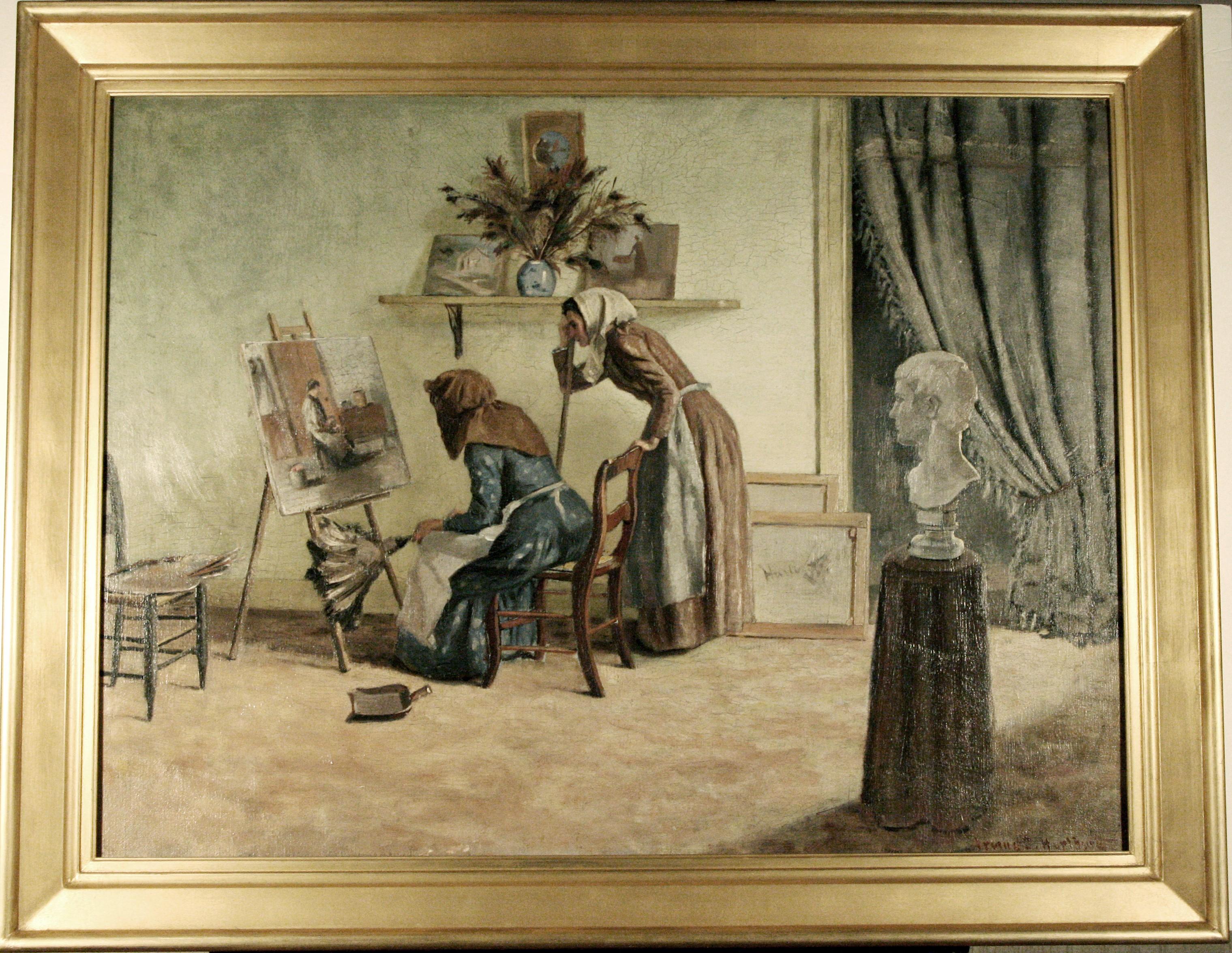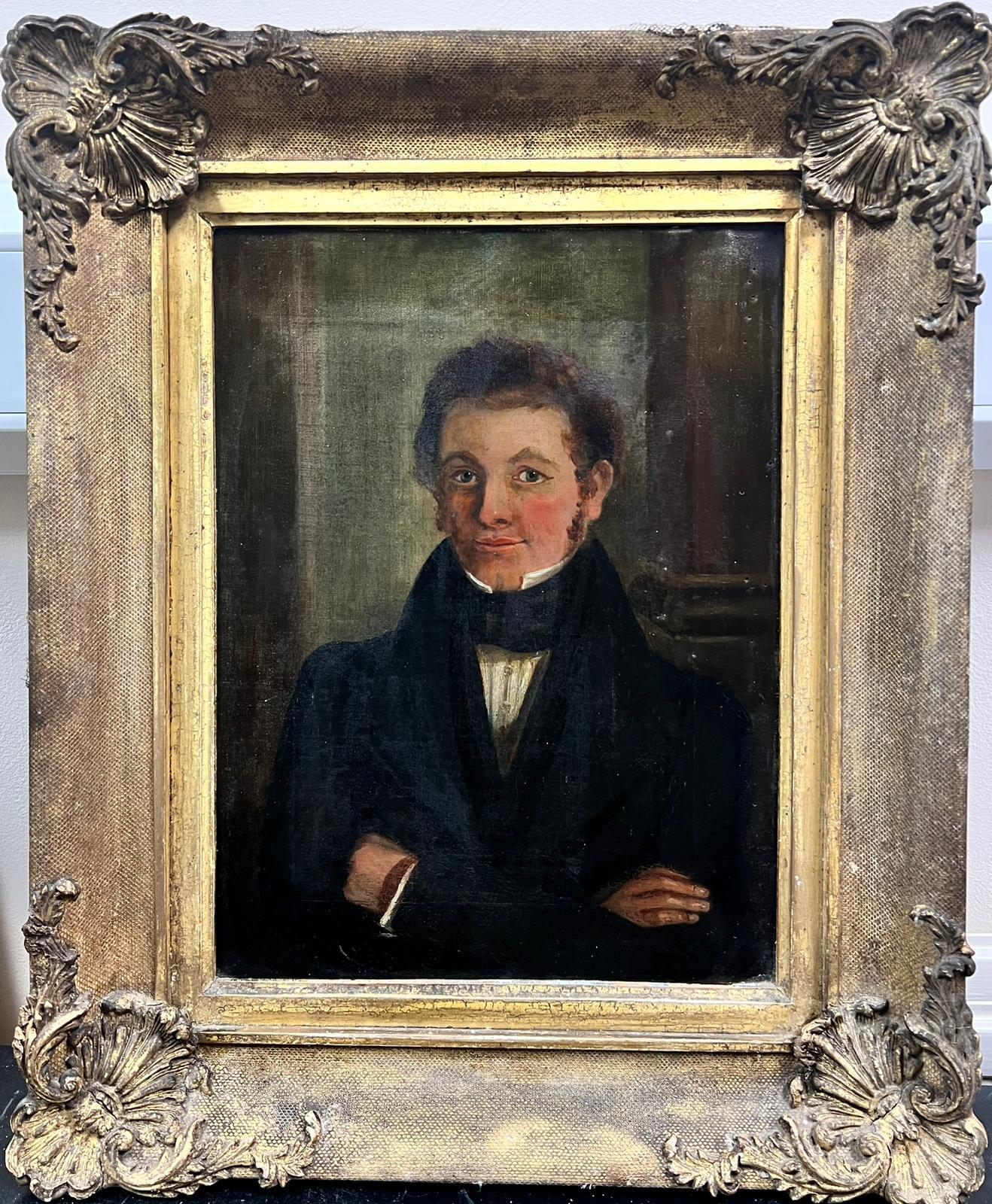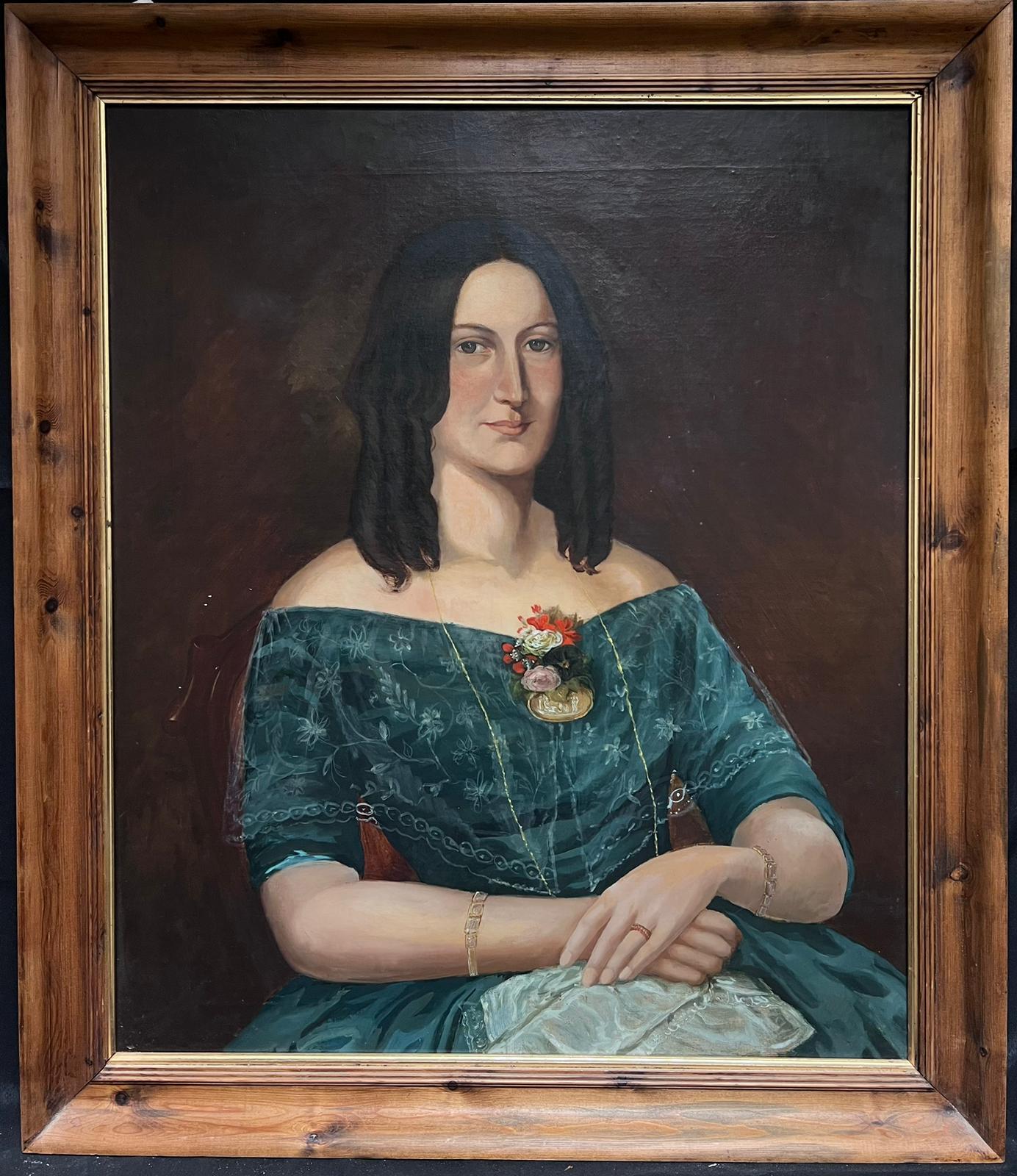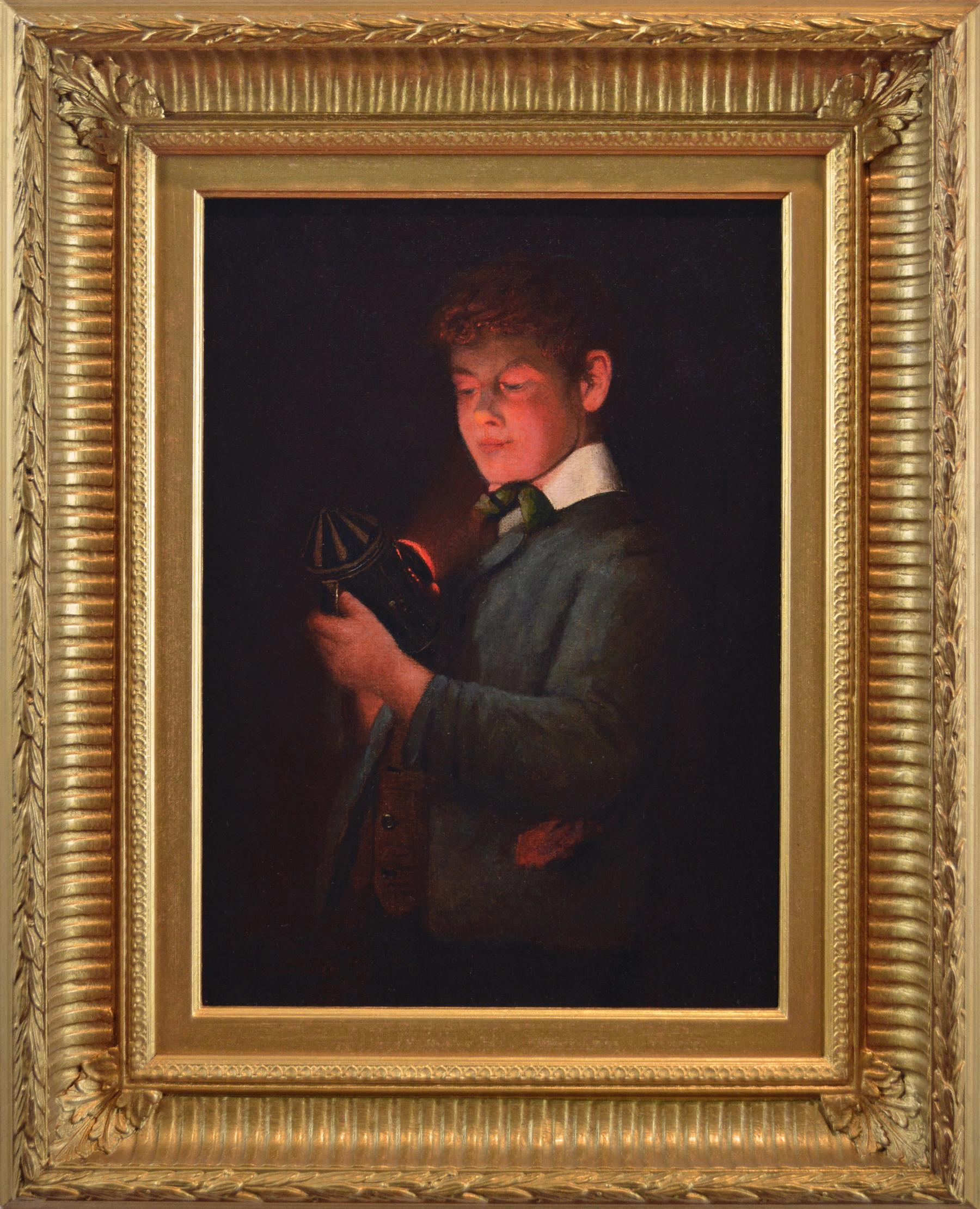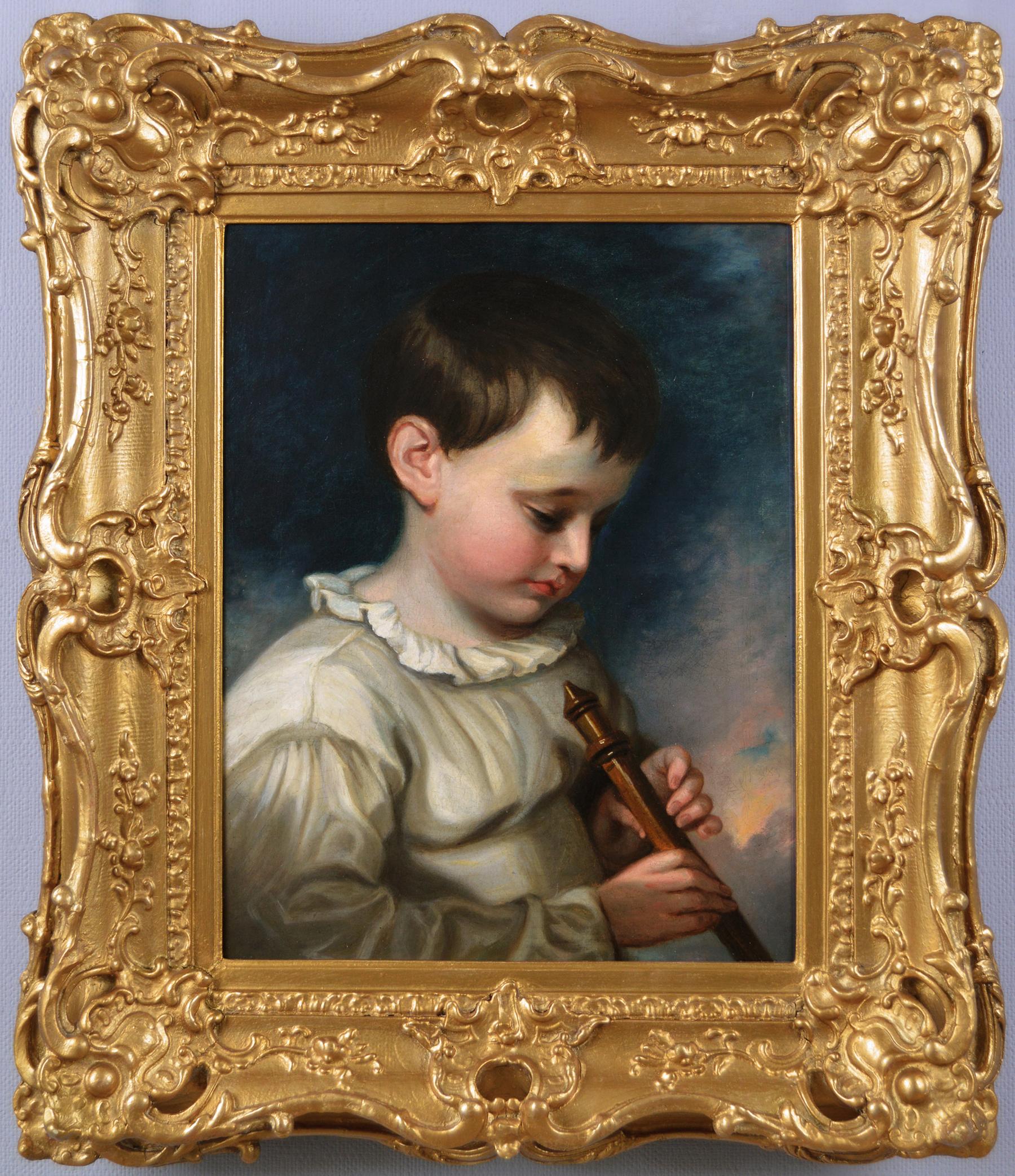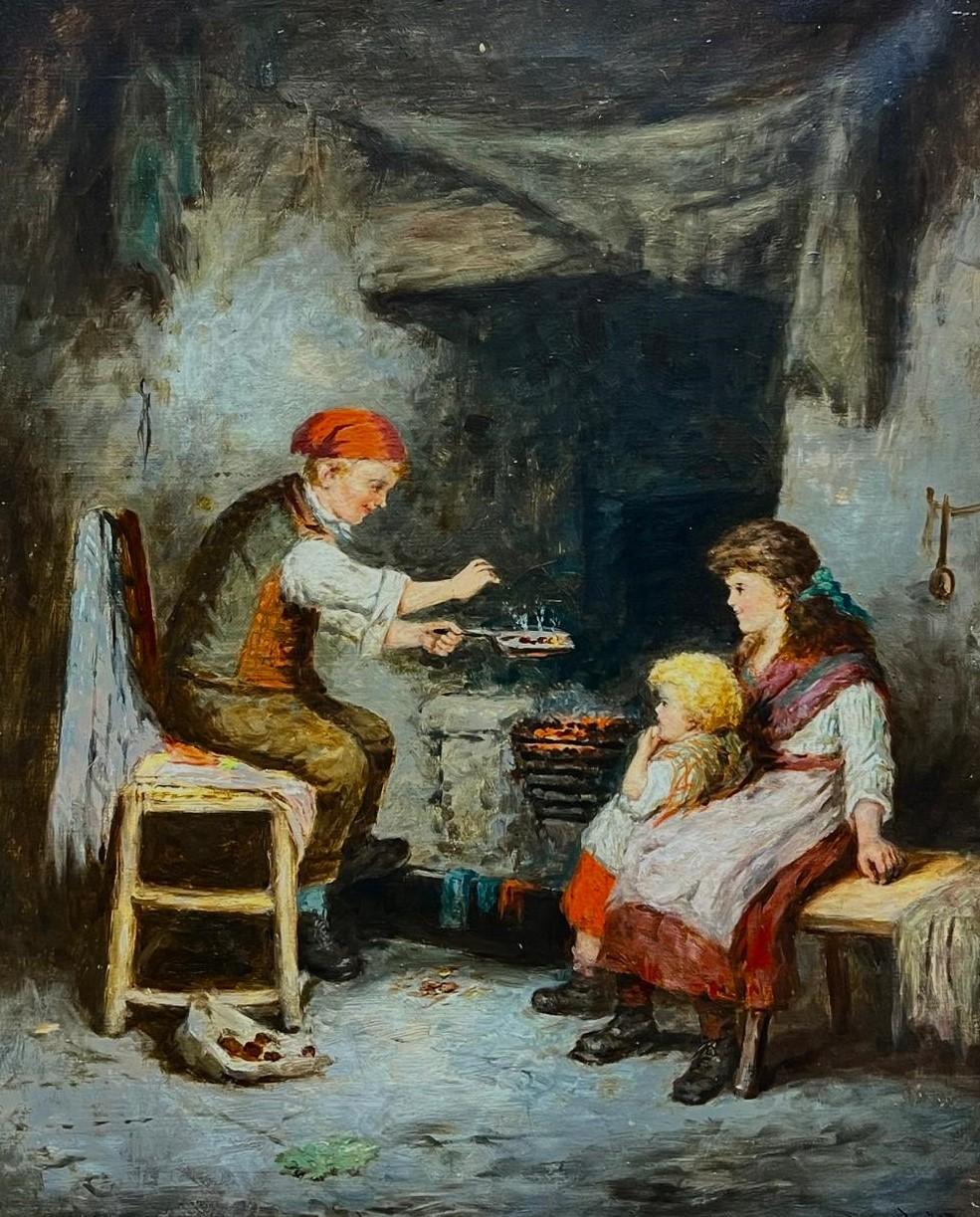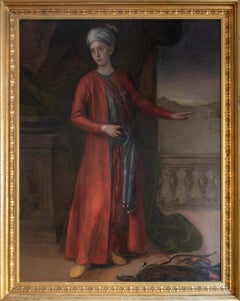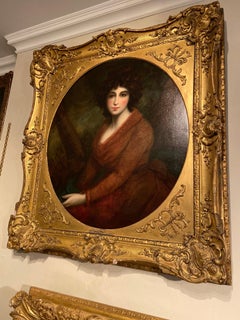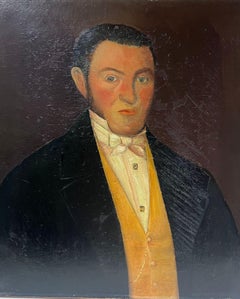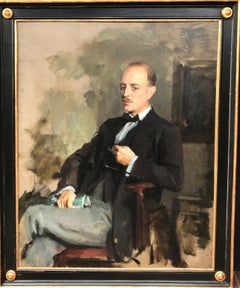
Oil Painting Portrait of Lord Edward Grenfell, 1st Baron St Just (1870-1941)
Want more images or videos?
Request additional images or videos from the seller
1 of 4
Oswald BirleyOil Painting Portrait of Lord Edward Grenfell, 1st Baron St Just (1870-1941)1922
1922
About the Item
- Creator:Oswald Birley (1880 - 1952, New Zealander)
- Creation Year:1922
- Dimensions:Height: 57 in (144.78 cm)Width: 47 in (119.38 cm)
- Medium:
- Movement & Style:
- Period:
- Condition:
- Gallery Location:London, GB
- Reference Number:1stDibs: LU67334157211
About the Seller
5.0
Vetted Seller
These experienced sellers undergo a comprehensive evaluation by our team of in-house experts.
Established in 1990
1stDibs seller since 2017
40 sales on 1stDibs
Typical response time: 4 hours
More From This SellerView All
- 18th C. Portrait of the 4th Earl of Sandwich a View of Constantinople BeyondLocated in London, GBJohn Montagu, 4th Earl of Sandwich (13 November 1718 – 30 April 1792) Attributed to George Knapton (1698-1778) Dressed in the Turkish manner, stand...Category
18th Century Old Masters Figurative Paintings
MaterialsOil
- Lady Dormore - A 16th Century Portrait of a key member of Shakespeare's EnglandLocated in London, GBLady Dormer, Mary Browne c. 1592 oil on panel 35 x 29 inches, unframed; 41 x 34.75 inches, inc. frame Inscribed 'Lady Dormore' Mary married Henry Wriothesley, 2nd Earl of Southampton who gave birth to Henry Wriothesley, 3rd Earl of Southampton - one of the great figures in Shakespears"s circle and founder of the Virginia company, developers of Virginia USA. Henry Wriothesley, born 6 October 1573 at Cowdray House, Sussex, was the only son of Henry Wriothesley, 2nd Earl of Southampton, by Mary Browne, the only daughter of Anthony Browne, 1st Viscount Montague, and his first wife, Jane Radcliffe.[5] He had two sisters, Jane, who died before 1573, and Mary (c. 1567 – 1607), who in June 1585 married Thomas Arundell, 1st Baron Arundell of Wardour.[6] After his father's death, Southampton's mother married firstly, on 2 May 1595, as his second wife, Sir Thomas Heneage (d. 17 October 1595), Vice-Chamberlain of the Household, and secondly, between 5 November 1598 and 31 January 1599, Sir William Hervey. She died in November 1607.[7] Early life When his father died on 4 October 1581 Southampton inherited the earldom and landed income valued at £1097 6s per annum. His wardship and marriage were sold by the Queen to her kinsman, Charles, Lord Howard of Effingham, for £1000. According to Akrigg, Howard then "entered into some further agreement, of which no documentation can now be found, which transferred to Lord Burghley personally the custody and marriage of the young Earl, but left Howard holding his lands", and late in 1581 or early in 1582 Southampton, then eight years of age, came to live at Cecil House in the Strand.[8] In October 1585, at age twelve, Southampton entered St John's College, Cambridge,[9] graduating M.A. on 6 June 1589.[10] His name was entered at the Gray's Inn legal society before he left the university, and he was admitted on 29 February 1588.[11] On Southampton's 16th birthday, 6 October 1589, Lord Burghley noted Southampton's age in his diary, and by 1590 Burghley was negotiating with Southampton's grandfather, Anthony Browne, 1st Viscount Montague, and Southampton's mother, Mary, for a marriage between Southampton and Lord Burghley's eldest granddaughter, Elizabeth Vere, daughter of Burghley's daughter, Anne Cecil, and Edward de Vere...Category
16th Century Old Masters Figurative Paintings
MaterialsOil
- 19th Century Oil Painting Portrait of a MuseLocated in London, GBJohn Opie RA (1761-1807, English) c. 1802 Oil on canvas Canvas dimensions 36 x 32 inches Framed dimensions 46.5 x 43.25 inches Original gilded period frame. John Opie was a Corni...Category
Early 19th Century Portrait Paintings
MaterialsOil
- 17th Century Italian Oil Painting Portrait of Music Prodigy Girolamo FrescobaldiLocated in London, GBPortrait of Girolamo Frescobaldi (1583-1643) Attributed to Antiveduto Della Grammatica (1571-1626) Oil on Canvas 1605-1609 Framed in a Nineteenth Century gild and composite frame 44....Category
Early 17th Century Baroque Figurative Paintings
MaterialsOil
- 17th Century Oil Painting Portrait of a Young English BoyBy Gerard SoestLocated in London, GBGerard SOEST (1600 - 1681) Portrait of a Young Boy oil on canvas 35.5 x 30.5 inches inc. frame Gerard Soest (circa 1600 – 11 February 1681), also known as Gerald Soest, was a portra...Category
17th Century Old Masters Portrait Paintings
MaterialsOil
- Double Portrait Oil Painting Brothers George, 2nd Duke Buckingham & Lord FrancisBy (After) Anthony Van DyckLocated in London, GBAftrer Anthony VAN DYCK - maybe Studio (1599, Antwerp – 1641, London) Flemish Double Portrait of George Villiers, 2nd Duke of Buckingham (1628-1687) & Lord Francis Villiers (1629-1648) Oil on Canvas 170 x 147 cm Anthony Van Dyck (1599-1641) No painter has done more to define an era than Anthony van Dyck. He spent only seven and a half years of his short life (1599- 1641) in England. He grew up in Antwerp, where his precocious talent was recognised by Peter Paul Rubens, the greatest painter of his age. He worked in Rubens’s studio and imitated his style as a religious artist, painting biblical scenes redolent of the lush piety of the counter-reformation. But soon he was on the move. In 1620, he visited London for a few months, long enough to paint a history picture, The Continence of Scipio, for the royal favourite, George Villiers, Marquess of Buckingham, and a portrait of his other English patron, the great art collector, Thomas Howard, 2nd Earl of Arundel. After a stint in Italy, making imposing portraits of the wealthy aristocracy and sketching and copying works by Titian, he returned to the Spanish Netherlands in 1627, becoming court artist to Archduchess Isabella before departing for The Hague in 1631 to paint the Dutch ruler Frederick Henry, Prince of Orange. Charles I’s invitation in 1632 led Van Dyck back to London where he was knighted, paid an annual salary of £200 and installed in a house in Blackfriars with a special jetty at which the royal barge might tie up when the King was visiting his studio. By this time Van Dyck was recognised as the leading court painter in Europe, with Velazquez at the court of Philip IV of Spain his only rival. He also excelled as a superbly observant painter of children and dogs. Van Dyck’s notoriety in depicting children led to the introduction of groups of children without their parents as a new genre into English painting (amongst other new genres). For the next 300 years, Van Dyck was the major influence on English portraiture. Nearly all the great 18th Century portraitists, from Pompeo Batoni and Allan Ramsay to Thomas Gainsborough and Joshua Reynolds, copied Van Dyck’s costumes, poses and compositions. George Duke of Buckingham & his brother Francis Villiers Painted in 1635, this double portrait was originally commissioned by Charles I, who raised the two brothers after their father, George Villiers, was assassinated in 1628. Together with their sister, Lady Mary Villiers, they enjoyed the King’s favour absolutely. Francis whose absolute ‘inimitable handsomeness’ was noted by Marvell (who was killed in a skirmish near Kingston upon Thames). The young duke who commanded a regiment of horse at the Battle of Worcester, remained closely associated with Charles II, held a number of high offices after the Restoration and was one of the most cynical and brilliant members of the King’s entourage, immortalised as ‘Zimri’ in Dryden’s Absalom and Achitopbel. As a young man he had sold his father’s great collection of pictures in the Spanish Netherlands, many of them to the Archduke Leopold Willhelm. Painted for Charles I and placed near the portrait of their sister in the Gallery at St James’ Palace. The handling of both costumes is very rich, and the heads are very carefully and sensitively worked. That of the younger boy in particular is more solidly built up than the lower part of the figure. A preparatory drawing for the younger boy is in the British Museum. There are copies at, e.g., Highclere Castle...Category
17th Century Old Masters Portrait Paintings
MaterialsOil
You May Also LikeView All
- Mid 19th Century English Oil Painting Portrait of Country Squire in Yellow WaistLocated in Cirencester, GloucestershirePortrait of a Country Squire English School, mid 19th century oil on canvas, unframed canvas : 26 x 21.5 inches provenance: private collection, UK condition: basic good condition tho...Category
Mid-19th Century Victorian Portrait Paintings
MaterialsOil
- Late 19th century Portrait of a young boy in a Summer landscape with flowersLocated in Woodbury, CTEva Roos, née Vedder was an artist and illustrator, mainly of children's books. She is believed to have lived and worked in the Hampstead area of London in the late 19th and early 20...Category
1890s Victorian Portrait Paintings
MaterialsOil, Canvas
- Mid Victorian Portrait of a Lady Seated in a Chair Original 19th Century OilLocated in Cirencester, GloucestershirePortrait of a Seated Lady English School, mid 19th century oil on canvas, unframed canvas: 16 x 13 inches provenance: private collection, England condition: good and sound conditionCategory
Mid-19th Century Victorian Portrait Paintings
MaterialsOil, Canvas
- English 19th century figure scene with fisherman helping ladies on to a boatLocated in Woodbury, CTOutstanding quality Victorian Genre scene of some fishermen helping some high-class ladies on to their small boat. The style is a type of the High-end Victorian Genre scene. Painters like Tissot, Millais, the Pre-Raphaelites, and other genre painters all painted in this high-quality style. The painting is signed and dated lower left and is an oil on canvas, but alas the signature is not obvious enough to know the painter. The history of the painting is that it came from an English private collection of paintings...Category
1860s Victorian Figurative Paintings
MaterialsOil
$5,200 Sale Price54% OffFree Shipping - The Artist's StudioBy Irving E. HurlburtLocated in Storrs, CTThe Artist's Studio. c. 1914. Oil on canvas. 24 1/8 x 32. The canvas is in fine condition, having been professionally lined, cleaned and varnished. The painting is housed in a 29 1/2 x 37-inch Sully-style gold frame. Signed, lower right and also on the verso of the canvas in the center of the image. Hurlburt apparently created a 'period piece' work of art. The two maids are dressed in late 19th-century clothing. The slight puff at the top of the sleeve is 1897 - 1898. The maid on the left has her scarf done in a way that is quite Dutch or Flemish. The woman on the right has a headscarf that could just be the tie of the scarf making that shape in the front. If her hair is done up with a chignon in the back causing the scarf to be full in the back, the placement of that bun would make the piece 1908 - 1912. The "Psyche knot" was very popular in 1910. The woman in the painting on the easel is maybe old fashioned with a simpler and fuller version of early 20th century hairstyles. It's hard to tell if what is around her neck is a boa or a collar, but boas of all shapes and sizes were popular in the 1890's. Her gown is decidedly unfitted and appears to have a loose belt at the waist. If the skirt is in layers with the light skirt length over a darker skirt, that would put the outfit in 1910 or 1914. The problem is the waist. In 1910 - 1912 it was a neo-empire revival with a high waist. It wasn't until 1914 that the waists were coming back down with sashes at the waistline. It is just not specific enough to see the details that would help to date it. I guess I would be inclined to date it more 1914 - the approximate date of the woman in the painting, and assuming that the maids are dressed in an old fashioned way, but their skirts are awfully full and long for the period to be practical for cleaning. Irving E. Hurlburt lived and worked in New Haven, Connecticut. For most of his life, he resided at Wolcott Street in New Haven. Possibly the room is the artist's studio. He studied at the Yale School of Fine Arts, 1890-93 He was a member of the New Haven Paint and Clay Club. In 1888 he received the Ethel Childe Walker Prize at the Yale School of Fine Arts. His sketches of Pictures of New Haven show historic buildings, scenes and events of New Haven, CT. They were reproduced as wood engravings in the New Haven Almanack for the years 1906 to 1913, published by Ye Olde Hardware Store of the John E. Bassett Co. His other published sketches in that venue were: The Tontine Coffee House, Mayor Roger Sherman...Category
Early 20th Century Victorian Portrait Paintings
MaterialsOil
$3,500 Sale Price46% Off - Early Victorian English Oil Portrait of Dapper Young Gentlemen gilt frameLocated in Cirencester, GloucestershireEnglish artist, circa 1830 oil on canvas, framed framed: 22 x 18 inches canvas: 16 x 12 inches Provenance: private collection, Dorset, England Condition: The painting is in overall ...Category
19th Century Victorian Figurative Paintings
MaterialsOil
Recently Viewed
View AllMore Ways To Browse
Paul Henderson
Edward Curtis Photographs
Nassau Bahamas
Old English Painting Dog
Women Golf
Oceanic Art New Guinea
Baby Bed Used
Marine Paintings 18th Century
Empire State Building Black And White Art
Clipper Ship Oil Painting
Large Hunting Landscape Oil Paintings
David Roberts Egypt
John Collier
Tall Ships Oil Painting
Antique Maps Oxford
Black And White Her Three Men
Duke Duchess Of Windsor
Irish Mid Century Oil Paintings


